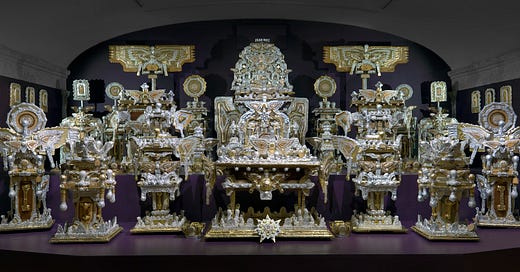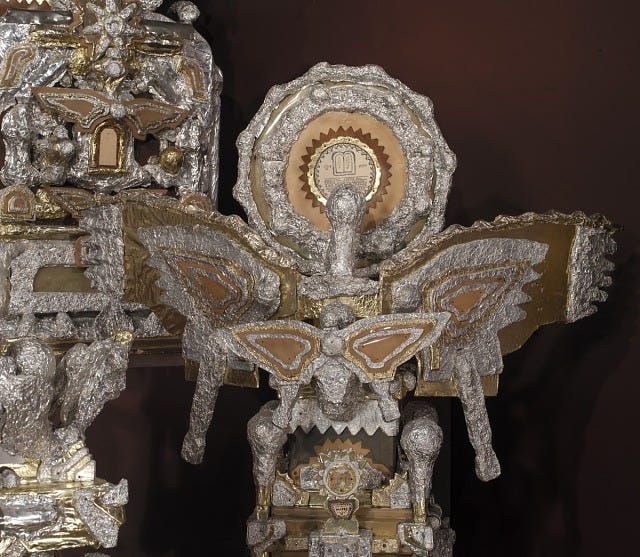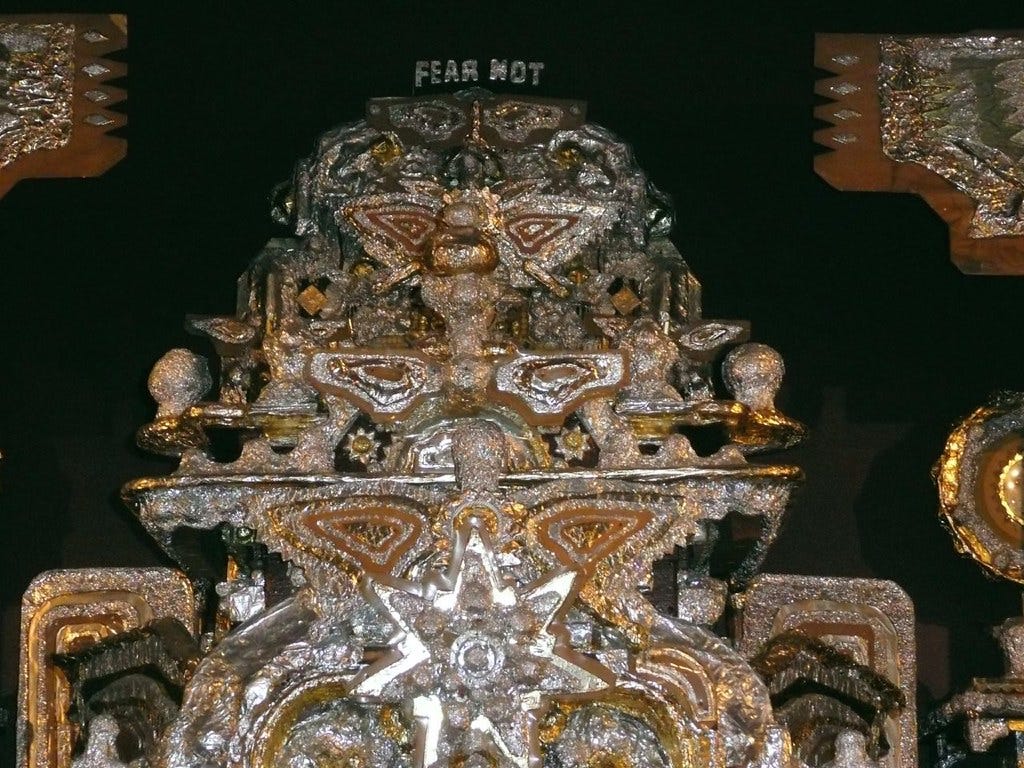Outsider Artist James Hampton’s Throne of the Third Heaven
A Forgotten Janitor’s Masterpiece That Transformed American Art History
James Hampton (1909–1964) was an unassuming black janitor and cook in Washington, D.C., who quietly lived a life of profound religious intensity. Unknown to almost everyone around him, Hampton spent nearly two decades creating one of the most remarkable and enigmatic pieces of American religious art: The Throne of the Third Heaven of the Nations’ Millennium General Assembly.
Today, this monumental work is housed in the Smithsonian American Art Museum as a unique landmark of outsider art—a term used to describe art created outside the boundaries of the traditional art world, often by self-taught individuals who are driven by intense personal vision rather than formal training or commercial ambition. Hampton is now considered one of the most important outsider artists in American history, a figure whose work redefined what art could be and where it could come from.
Born in 1909 in Elloree, South Carolina, Hampton was the son of a traveling Baptist preacher. His upbringing was steeped in religion. In his twenties, he moved to Washington, D.C., where he held various jobs, including short stints as a cook and janitor. During World War II, he served in the Air Force and was stationed in Guam, where he worked in a racially segregated unit as a carpenter’s assistant. His military records describe him as quiet and meticulous.
After returning from the war, he resumed work as a janitor. It was during these years that he experienced a series of religious visions. He believed he had been visited by God, Moses, the Virgin Mary, and even Adam.
Driven by these visions, Hampton dedicated his free time to preparing for the Second Coming of Christ. In 1950, he rented a small garage on 7th Street NW in Washington, D.C., where, over the next 14 years, he meticulously assembled an expansive and radiant religious installation.
Using only scavenged materials—cardboard, discarded furniture, lightbulbs, mirror shards, aluminum foil, jelly jars, and desk blotters—Hampton built an array of altars, pulpits, crowns, and plaques. He held it together with tacks, pins, glue, and tape.
The centerpiece is a seven-foot-tall throne, built upon an old maroon-cushioned armchair and crowned with the words “Fear Not.” The throne is surrounded by 180 objects, many bearing inscriptions from the Book of Revelation. Plaques name apostles, biblical patriarchs, and prophets such as Abraham and Ezekiel.
To Hampton, this was no mere art project—it was a divine mission. He described the work as a “monument to Jesus in Washington,” a sacred space that would herald Christ’s return. The term “Third Heaven” referenced in the title draws from biblical scripture, describing the realm of God—a place beyond the physical and spiritual heavens.
Hampton had no formal artistic training, sought no public recognition, and kept his project a secret even from friends and family. It was only discovered by his landlord after his death from stomach cancer in 1964.
The discovery stunned the art world. Sculptor Ed Kelly, amazed by the installation, contacted art dealer Alice Denney, who then brought luminaries such as Leo Castelli, Ivan Karp, and Robert Rauschenberg to see it. Harry Lowe, assistant director of the Smithsonian, likened the moment to “opening Tut’s tomb.” Time magazine’s art critic Robert Hughes called it “the finest work of visionary religious art produced by an American.”
Shortly afterward, Hampton’s work was acquired by the Smithsonian, where it remains on permanent display.









WOW! When one is moved by the spirit, amazing things can be done. This reminds me of when the Temple was being built. God gave them very specific instructions. It seemed to be remarkably ornate and complex. Unfortunately, the Temple didn't make it to the Smithsonian. So, we'll just have to do with the description. 😉